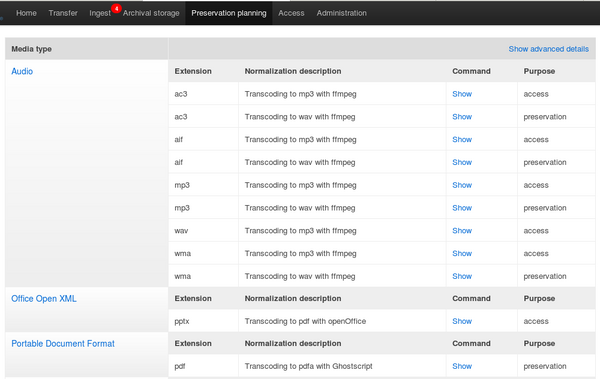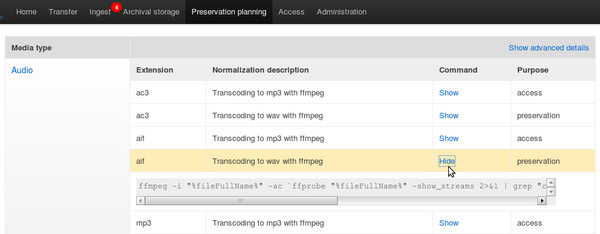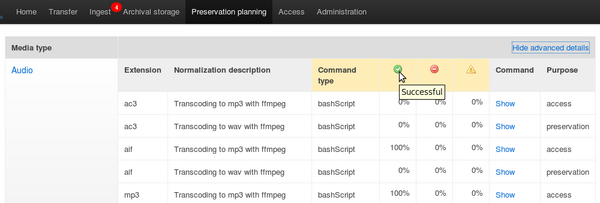UM preservation planning
Revision as of 15:39, 27 January 2012 by Evelyn McLellan (talk | contribs)
Main Page > Documentation > User manual > User manual 0.8 > Preservation planning
General description
The ability to implement preservation plans is built into Archivematica. Archivematica's primary preservation strategy is to normalize files to preservation and access formats upon ingest. The preservation formats are added to the AIP and the access formats are used to generate a DIP for upload to the access system. Note that the original files are always kept, to allow for different preservation actions in the future, such as normalization to different archival formats or emulation.
The Preservation planning tab
- The Preservation planning tab lists formats by media type and describes their preservation and access normalization paths (figure 1).
- Clicking on a media type (such as Audio) takes the user to the relevant preservation plan on the Archivematica wiki.
- Clicking on "Show" on the right-hand side opens a tab showing the normalization command (figure 2). In future versions of Archivematica these will be editable directly from the Preservation planning tab; in Archivematica 0.8 the commands can be edited in the mysql database. Instructions for this are available at Link.
- Clicking on "Show advanced details" in the upper right-hand corner shows more information about the the of command used and statistical information on normalization error rates (figure 3). Hover your cursor over an icon to see an esplanation of what the icon means. To see the number of successful normalization vs the total number of attempts, hover your cursor over the percentage number in the column. You will see a number such as 55/57 which indicates 55 successful normalization out of 57 attempts for that format.


